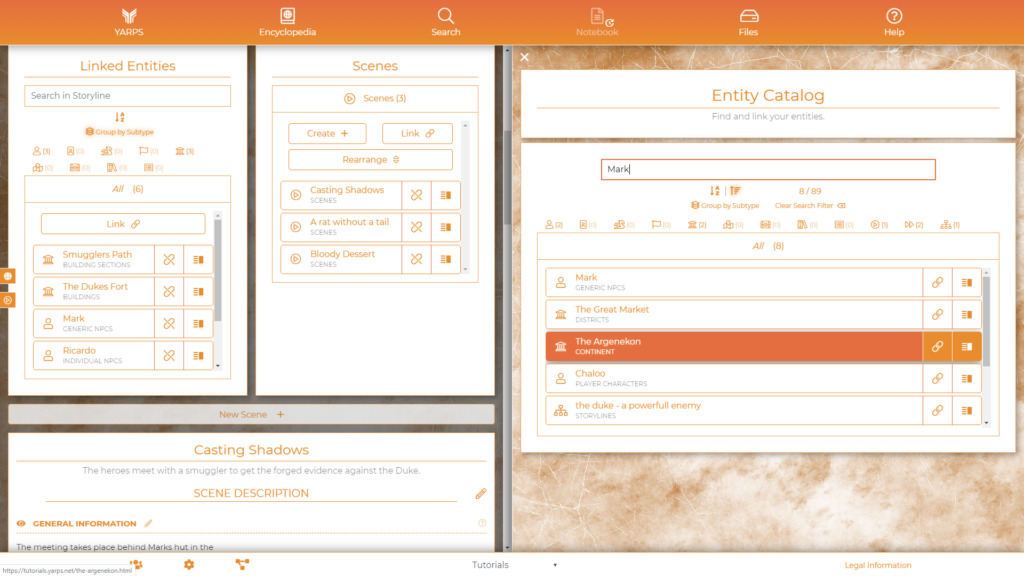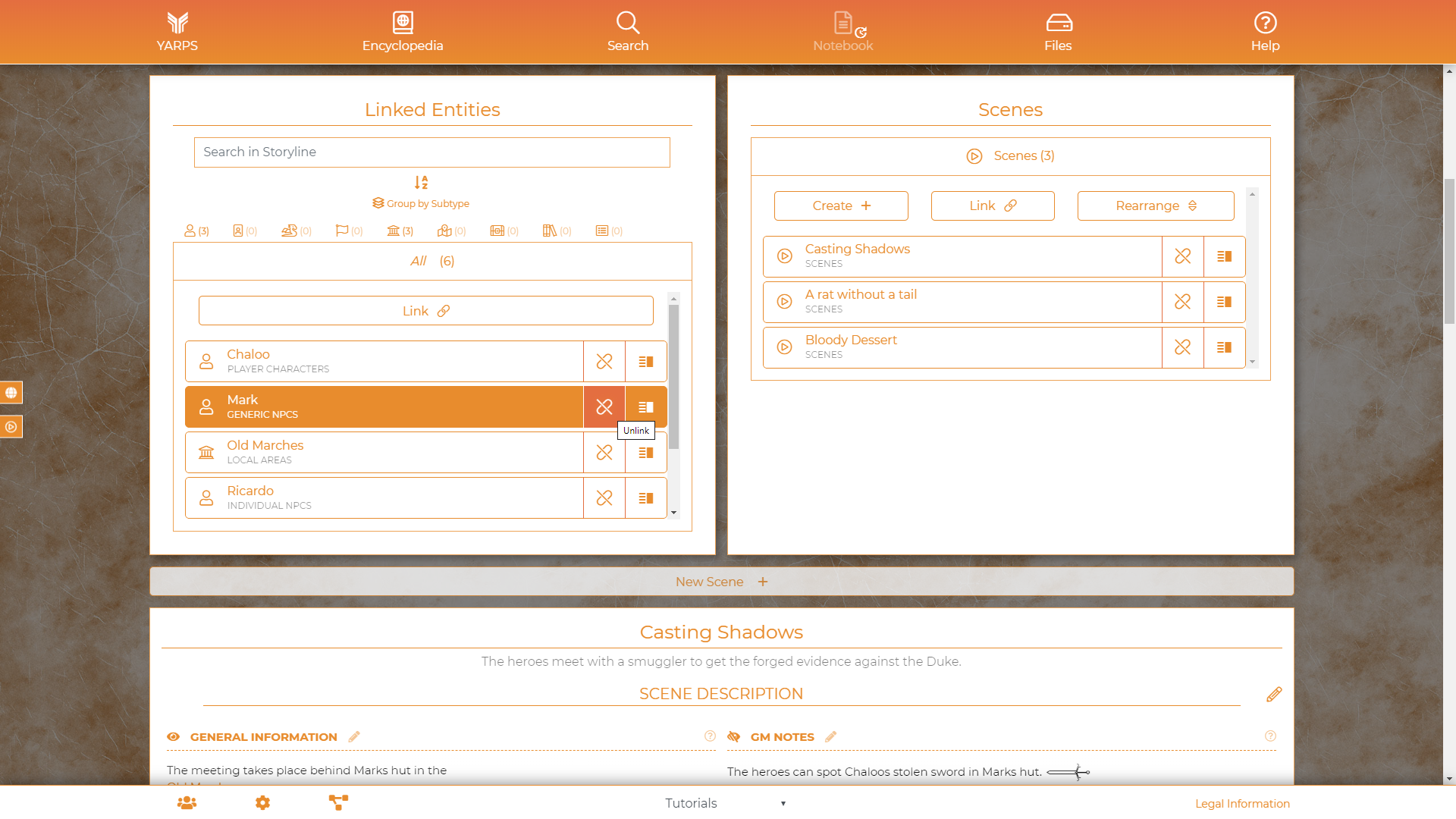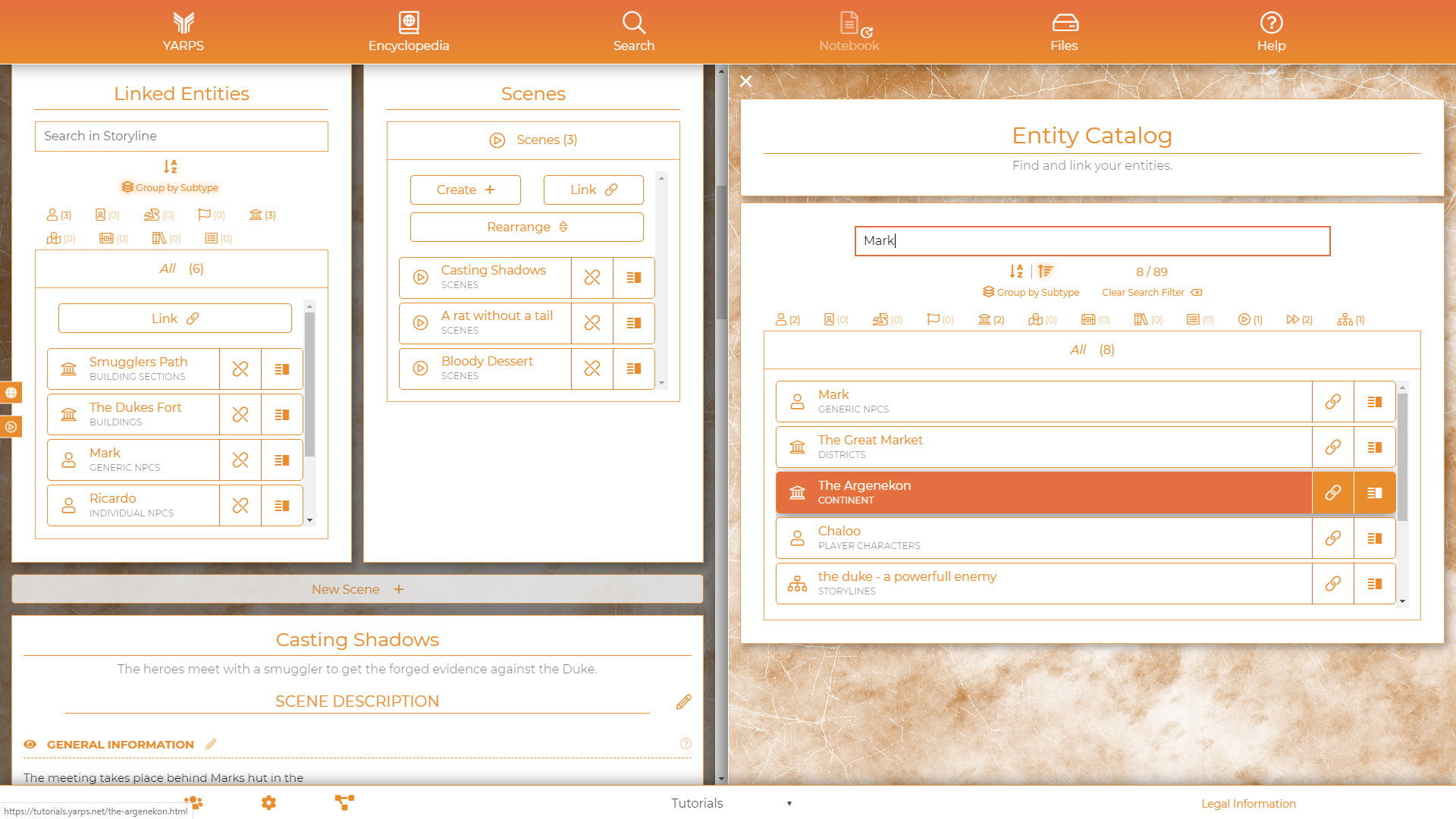Every story needs a reliable structure, a dramatic frame, to be interesting. Especially long campaigns require much preparation by game masters. YARPS helps you to stay on top of your stories. It automatically documents everything that happens in your game and allows you to set up world-changing events with a single click.
The secret plans of your antagonist, the motivational speech before a battle, the reunion between lovers after having spent a long time apart – many scenes can move, captivate or mesmerize players in a roleplaying game. Few of those scenes are easy to improvise, though. They require careful preparation and a certain structure. Game masters who want to surprise or manipulate their players, like a dangerous antagonist would, need to construct their plots thoroughly.
YARPS provides an entire suite of features to help you with this. From the creation of plots to connect strange recurring events to a certain trigger to an overview of the different tasks the group has taken upon themselves—YARPS has the right tools for you. Through the links between relevant entities, such as people involved in an event or historical background information, the intelligent search is later able to draw logical connections. For example, you can find out when your players last encountered a certain ally and compare that date with a timeline. This feature is especially useful for game masters who are planning individual scenes. If you want a specific artifact to make an appearance, simply link to its entity. YARPS recognizes that this artifact will now be part of that game session or of the respective story arc. With a quick glance at the preview window you can find out where the artifact was seen last or who its previous owner was.
It’s a matter of just a few clicks to change the planned sequence of events, for example when the players acted in an unforeseen way in your last session. This way, you won’t forget to forward all important events or information to your players when you rearrange the order of scenes or jump between them.
Players can also view an organized collection of entities that are important to an individual game session. At the end of a scene, or a game session, the GM can simply release new content for the players to see with a single click—or leave them in the dark for now. Here you can find out more.

Story Entity Types
Story Management is divided into different entity types relevant to story planning. Here’s a short overview for you. There’s also a video tutorial available that explains the details of our story management.
- Objectives: A collection of all tasks, missions, or quests the group has been approached with, no matter whether they accepted them or declined them heroically. This overview is important for both GMs and players, especially when the tasks have different objectives or employers.
- Scenes: A scene describes the actions of one or more persons in a specific location over a certain period of time. All relevant entities, such as the location, the NPCs involved, etc., are linked here and automatically compiled in a list. A scene usually presents a challenge for the PCs and puts them in trouble. There are also rumors about game masters who occasionally present their players with rewarding, entertaining, or even enjoyable scenes.
- Sessions: You can also combine any number of scenes to a session, usually played on the same game date. All entities of the corresponding scenes are automatically linked with a session. You can also add more entities that aren’t immediately connected to a scene but are still somehow relevant to the session. For instance, you could add a theme to a session or include the party’s employer even though this NPC isn’t involved in any scenes directly.
- Storylines: A storyline consists of several different scenes that are connected thematically. In contrast to the scenes of a session the scenes of a storyline don’t have to be in direct sequential order. Instead, they share a superordinate element, such as a long-term goal, an ongoing quest, or a historic development of your game world that isn’t affected directly by the actions of your players.
- Campaigns: Campaigns allow you to separate larger story arcs or entire player groups in your Encyclopedia. If entities, such as player characters or locations, are assigned to a specific campaign, users will only be able to view them in YARPS when they are also part of this particular campaign and the campaign is selected. Of course, you’ll be able to assign entities that you want to use in different stories to several campaigns.



